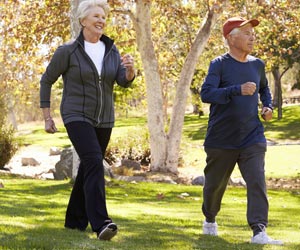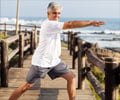Post-exercise hypotension (decrease in blood pressure below resting values) is dependent on exercise intensity in healthy teens, says study
Highlights:
- A decrease in blood pressure below resting values known as post-exercise hypotension was observed in teenagers who underwent high-intensity exercise
- The fall in blood pressure lasted up to one hour post-exercise and was not dependent on the stretch of the carotid artery and the brain control of the heartbeat.
- Vigorous exercise at a young age could have heart benefits later in life.
Details of the Study
The researchers recruited healthy teenage males (12-15 years old) who were asked to undergo four tests conducted at separate occasions across three weeks.1. During the first visit, participants performed an exercise test to calculate the intensity with which they could exercise.
After this first visit, all participants went through three experimental conditions on separate days in a random order; they were asked to perform
2.Vigorous intensity exercise (8 bouts of one-minute's worth of running at a vigorous intensity)
3.Moderate intensity exercise (running at moderate intensity/jogging)
4. No exercise (control)
Parameters that were monitored and measured were
- Blood pressure at every heartbeat before and up to one-hour after the exercise
- Ultrasound images of the carotid artery, the main blood vessels that supply the head and neck with oxygenated blood (to determine the 'stretch' of the artery and how this impacts the control of blood pressure following exercise)
Results of the Study
- In the vigorous intensity exercise (equal to running close to the maximum heart rate) group, post-exercise hypotension was observed in the hours following exercise; i.e., the blood pressure decreased below resting values; the same effect was not observed following moderate intensity exercise where blood pressure was restored just twenty minutes after exercise indicating that the vigorous intensity exercise was instrumental in causing post-exercise hypotension lasting up to one-hour.
- The stretch of the carotid artery and the brain control of the heartbeat which monitor and adjust blood pressure were similar between the two exercise intensity groups at one-hour following exercise.
- These findings indicate that exercise intensity causes the change in blood pressure by altering other mechanisms of adjustments, one-hour following the completion of the exercise in healthy teenagers.
However, the shortcomings of the study were
- All measurements were taken non-invasively because the study group consisted of teenagers; this may have reduced accuracy in comparison to more invasive drug-infusion methods.
- The research involved only boys, so the findings cannot be extrapolated to girls.
- The observed blood pressure reduction was measured only up to one-hour after a single bout of exercise.
Similarly, the research team also wish to investigate whether the decrease in blood pressure causes lowering of vessel reactivity to stressful situations. Finally, the effects of exercise training on blood pressure control following exercise in teenagers remain to be seen.
Ricardo Oliveira, a Brazilian Ph.D student funded through the Science without Borders Ph.D scheme who led the research, enjoyed testing (and educating) the participants: "The best part of the research was the involvement and dedication of the participants, who we always find are better research participants than adults! All were disappointed that the project came to an end and they reported to have enjoyed visiting the university facilities, participating in a scientific study and learning new information about their heart, blood vessels and how the cardiovascular system responds to exercise.”
Blood Pressure
An optimal blood pressure reading is considered to be under 120/80mmHg. If the blood pressure is persistently higher than normal then a person is said to have high blood pressure.If the blood pressure has been high over a long time it is considered one of the main risk factors for heart disease. The chances of having persistently high blood pressure increases with age.
To keep blood pressure under control, aerobic exercise (in which your heart beats harder and you use more oxygen than usual), such as brisk walking, is very important. Moderate-intensity aerobic exercise at least 2 and a half hours per week, or vigorous-intensity aerobic exercise for 1 hour and 15 minutes per week is highly recommended to lower blood pressure.
References:
- Ricardo Oliveira Alan R. Barker Florian Debras Alexandra O'Doherty Craig A. Williams "Mechanisms of blood pressure control following acute exercise in adolescents: Effects of exercise intensity on haemodynamics and baroreflex sensitivity" (2018) Experimental Physiology https://doi.org/10.1113/EP086999
- Blood pressure - (https://www.heartfoundation.org.au/your-heart/know-your-risks/blood-pressure)
- How to Prevent High Blood Pressure - (https://medlineplus.gov/howtopreventhighbloodpressure.html)
Source-Medindia
















